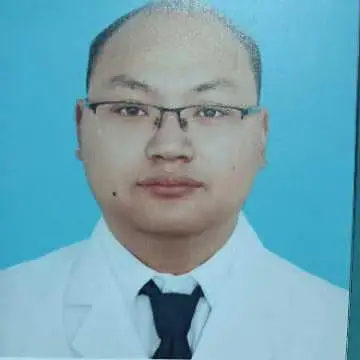
双相情感障碍快速循环型和环性心境障碍的区别

躁狂急性发作最好的药物

躁狂了加喹硫平可以吗?


躁狂症的病人以心境高涨为主,无故表现为高兴愉快甚至欣喜若狂,有些患者仅表现为易激惹症状。病情轻者社会功能无损害或仅有轻度损害,严重者可出现幻觉、妄想等精神病性症状。患躁狂症的病人,至少有下列表现中的3项:
(1)注意力不集中或随境转移;
(2)语量增多;
(3)思维奔逸(语速增快、言语迫促等)、联想加快或意念飘忽的体验;
(4)自我评价过高或夸大;
(5)精力充沛、不感疲乏、活动增多、难以安静,或不断改变计划和活动;
(6)鲁莽行为(如挥霍、不负责任,或不计后果的行为等);
(7)睡眠需要减少;
(8)性欲亢进。
当然此类病人的社会功能严重缺损,常常给他人造成危险或不良后果,且病程至少在1周以上。早发现,早治疗仍然是防治该病的重要手段之一。

其包含躁狂发作、抑郁发作和双相情感障碍。
现阶段治疗抑郁发作的药物主要有米氮平、艾司西酞普兰和氟西汀、舍曲林。美国 FDA 批准可以在儿少抑郁症治疗中运用氟西汀,将其作为治疗的首选药物。该药物的生物利用度很高,且患者吸收效果比较理想,但是也会有一些不良反应,比如,头痛、恶心和失眠等。
对于抑郁症的治疗,使用帕罗西汀的效果比不上安慰剂,且服用该药物会出现显著的戒断症状,容易导致患者产生自杀倾向,所以,儿童和青少年患者应避免使用。还有文拉法辛,在刚使用时也容易让患者产生自杀倾向,所以,儿童青少年患者也要避免使用。
抵抗抑郁的药物,应该尽量做到单一用药,从低剂量开始运用,可以在一星期内滴定到治疗量;如果患者还有精神症状,就可以使用一些增效剂,比如,丁螺环酮、心境稳定剂等。躁狂症通常选用碳酸锉进行治疗,再配合使用其他抗精神病的药物。
对于儿童青少年双相情感障碍,在使用药物时会用到较多类型的药物,比如,心境稳定剂、抗抑郁、抗焦虑和抗精神病药物等。有相关的研究结果显示,使用第二代抗精神病药物和心境稳定剂,在治疗效果上要比一代药物好。MECT 一般会和药物治疗进行结合,针对躁狂症急性期、难治性抑郁症、双相情感障碍患者的治疗,联合使用效果更好。
儿童青少年强迫症患者药物治疗。一般常用的药物种类主要包括: SSRIs 类药物舍曲林、三环类抗抑郁药氯米帕明、帕罗西汀以及氟伏沙明等。在治疗中一般会将抗精神病药物当作增效剂配合治疗,现有循证医学证据的药物包括阿立呱哗、利培酮、奥氮平以及喳硫平等。

(1)锂盐 已经证实锂盐是治疗躁狂急性发作的首选药物,以碳酸锂为代表。对躁狂和抑郁交替发作的双相情感障碍有很好的治疗和预防复发作用,对反复发作的抑郁症也有预防发作作用。但起效较慢,需用药2周左右显效。应定期监测血药浓度、甲状腺激素水平及肾功能。另外,肾功能不全者、严重心脏疾病患者禁用。
(2)丙戊酸盐 代表药物丙戊酸钠、丙戊酸镁及其缓释片,是目前使用最为普遍的心境稳定剂,用于治疗与双相情感障碍相关的躁狂发作。长期服用个别人出现体重增加及肝功能异常。 有肝病或明显肝功能损害者禁用。

(3)卡马西平 预防或治疗躁狂-抑郁症;可作为锂、抗精神病药、抗抑郁药无效的或不能耐受者的替代治疗,可单用或与锂盐和其他抗抑郁药合用。突然停药可诱发癫痫,服药期间需监测肝肾功能及血钠。有房室传导阻滞、血清铁严重异常、骨髓抑制、严重肝功能不全等病史者禁用。
(4)拉莫三嗪片 主要用于双相抑郁,对单相抑郁无效且不宜单用。少数患者可出现严重皮疹。与丙戊酸钠合用可增加皮疹的发生率,一旦出现应停药。缓慢增加剂量可减少皮疹的发生率。
(5)非典型抗精神病药 包括氯氮平、奥氮平、利培酮、喹硫平、阿立哌唑和齐拉西酮等。可作为心境稳定剂或增效剂,尤其适用于伴有精神病性症状的躁狂发作患者。需注意代谢和心血管副作用。已知有窄角青光眼危险的患者禁用。
微信扫描关注,填写资料,静等你来咨询啊,好评等着你!


理论上,抗癫痫药类心境稳定剂可升高惊厥阈,故电休克治疗期间似乎应停用此类药物,或至少降低其剂量,以免阻碍电休克诱导发作。然而,一系列证据显示,联用此类药物并不损害电休克治疗的总体疗效。
电休克联用锂盐的不良反应总体较少,停用锂盐后可快速逆转,且可能与血锂水平过高相关。然而,电休克治疗期间停用锂盐可能诱发快速循环,而这一现象在重新使用锂盐后消失。
图片
相比于治疗抑郁,电休克(ECT)治疗躁狂的证据较少,且诸多问题有待解答,如联用心境稳定剂(如抗癫痫药或锂盐)对电休克疗效的影响。
图片
一项近期发表于《美国精神病学杂志》(AJP,影响因子 14.119)的综述中,澳大利亚墨尔本大学及美国哥伦比亚大学的研究者针对电休克治疗躁狂的证据进行了全面回顾。以下简要介绍电休克联用心境稳定剂时的疗效与安全性证据,尤其是与未联用此类药物相比时。
抗癫痫药类心境稳定剂
众所周知,很多心境稳定剂同时也是临床常用的抗癫痫药。关于抗癫痫药类心境稳定剂在电休克治疗期间的使用,现有证据存在一定冲突。
抗癫痫药可升高惊厥阈。从这一角度出发,电休克治疗期间似乎应停用此类药物或至少降低其剂量,以免阻碍电休克诱导发作。然而与直觉冲突的是,一系列证据显示此类药物并不损害总体疗效。
例如,一项较早(2010年)的病例回顾研究提示,相比于未联用抗癫痫药类心境稳定剂的患者,联用者平均所需要的电休克治疗次数更多(7.9 vs. 6.3),住院时间更长(25.1天 vs. 20.6天),但两组总体症状相当(CGI-I; 2.0 vs. 1.96)。
此后发表的随机对照研究同样提示,联用抗癫痫药类心境稳定剂不损害总体疗效。
图片
例如,电休克联用丙戊酸钠或卡马西平时,患者所需电休克治疗次数或住院日并不多于单用电休克时。一项相对较新的研究中,接受双颞侧电休克治疗的患者被随机分入全量抗癫痫药、半量抗癫痫药、停用抗癫痫药组,抗癫痫药主要为丙戊酸钠及卡马西平。结果显示,三组患者症状转归(YMRS、CGI)及认知副作用无显著差异,且全量组患者达到临床缓解所需时间较半量组短。此外,电休克联用拉莫三嗪也被证明是安全的,且并不影响发作及刺激所需电量。
作者认为,个体化滴定刺激电量至少能在一定程度上抵消抗癫痫药对诱导发作的影响。
锂盐
有关电休克联用锂盐的研究证据很多;尽管结果各异,但有一点是一致的——未发现与电休克联用锂盐直接相关的死亡个案。
图片
有研究者对电休克治疗期间联用锂盐的安全性进行了详尽的回顾。目前已有报道的不良反应包括呼吸暂停时间延长、长时程或迟发性惊厥发作,电休克后谵妄,认知损害更重,以及5-HT综合征。然而,患者用药繁杂、共病躯体疾病等一系列因素影响了研究的外推性。这些不良反应通常发生在血锂水平较高时,如接近或超过1.0mEq/L。
今年的一项研究显示,相比于单用电休克或单用锂盐,电休克联用锂盐治疗的患者被诊断为谵妄或认知损害的比例显著更高,如谵妄风险为单用电休克者的11.7倍。具体而言,联用锂盐的抑郁症患者发生谵妄的比例为7.8%,双相抑郁患者为3.4%,而躁狂患者为0%。然而,该研究为回顾性质,且缺乏血锂水平及电极放置方面的信息。
一项前瞻性对照研究及一项大规模回顾性研究均显示,电休克联用锂盐并不升高严重不良反应的风险。如采用双颞侧电极放置时,联用锂盐者尽管呈现出麻醉恢复所需时间及呼吸暂停时间更长的趋势,但未达统计学显著性,且与血锂水平较高(接近或超过1.0mEq/L)显著相关;联用与未联用锂盐者在电休克后谵妄及发作参数方面无显著差异。
另一项大规模回顾性研究中,相比于联用其他精神药物(如抗精神病药)的51名患者,90名电休克联用锂盐者所需要的电休克治疗次数及治疗后住院日无显著差异。这一发现也与既往一项研究结果一致,即联用锂盐时并未观察到麻醉恢复所需时间延长。
总体而言,文献提示电休克联用锂盐时的不良反应相对较少;一旦发生,停用锂盐后可快速逆转,且可能与血锂水平过高相关。如果患者正在使用锂盐,且将电休克作为维持治疗手段,一种常见的做法是在电休克治疗前一天临时停药。然而,大部分有关电休克联用锂盐的研究证据来自重性抑郁发作患者,针对躁狂患者的外推性存在不确定性。
图片
此外,为开展电休克治疗而停用锂盐,可能造成一系列问题。如一些个案报告提示,电休克治疗期间停用锂盐诱发了快速循环,而这一现象在重新使用锂盐后消失

以下内容来源于新英格兰医学杂志。
Presentation of Case

Differential Diagnosis
Movement Disorders
Seizures
Functional Movement Disorder
Dyskinesia
Limb-Shaking TIAs
Clinical Impression and Initial Management

Clinical Diagnosis
Dr. Albert Y. Hung’s Diagnosis
Pathological Discussion

Pathological Diagnosis
Additional Management
Final Diagnosis

以下内容来源于新英格兰医学杂志。
Presentation of Case
Dr. Christine M. Parsons (Medicine): A 75-year-old woman was evaluated at this hospital because of arthritis, abdominal pain, edema, malaise, and fever.
Three weeks before the current admission, the patient noticed waxing and waning “throbbing” pain in the right upper abdomen, which she rated at 9 (on a scale of 0 to 10, with 10 indicating the most severe pain) at its maximal intensity. The pain was associated with nausea and fever with a temperature of up to 39.0°C. Pain worsened after food consumption and was relieved with acetaminophen. During the 3 weeks before the current admission, edema developed in both legs; it had started at the ankles and gradually progressed upward to the hips. When the edema began to affect her ambulation, she presented to the emergency department of this hospital.
A review of systems that was obtained from the patient and her family was notable for intermittent fever, abdominal bloating, anorexia, and fatigue that had progressed during the previous 3 weeks. The patient reported new orthopnea and nonproductive cough. Approximately 4 weeks earlier, she had had diarrhea for several days. During the 6 weeks before the current admission, the patient had lost 9 kg unintentionally; she also had had pain in the wrists and hands, 3 days of burning and dryness of the eyes, and diffuse myalgias. She had not had night sweats, dry mouth, jaw claudication, vision changes, urinary symptoms, or oral, nasal, or genital ulcers.
The patient’s medical history was notable for multiple myeloma (for which treatment with thalidomide and melphalan had been initiated 2 years earlier and was stopped approximately 1 year before the current admission); hypothyroidism; chikungunya virus infection (diagnosed 7 years earlier); seropositive erosive rheumatoid arthritis affecting the hands, wrists, elbows, and shoulders (diagnosed 3 years earlier); vitiligo; and osteoarthritis of the right hip, for which she had undergone arthroplasty. Evidence of gastritis was reportedly seen on endoscopy that had been performed 6 months earlier. Medications included daily treatment with levothyroxine and acetaminophen and pipazethate hydrochloride as needed for cough. The patient consumed chamomile and horsetail herbal teas. She had no known allergies to medications, but she had been advised not to take nonsteroidal antiinflammatory drugs after her diagnosis of multiple myeloma.
Approximately 5 months before the current admission, the patient had emigrated from Central America. She lived with her daughter and grandchildren in an urban area of New England. She had previously worked in health care. She had no history of alcohol, tobacco, or other substance use. There was no family history of cancer or autoimmune, renal, gastrointestinal, pulmonary, or cardiac disease.
On examination, the temporal temperature was 37.1°C, the heart rate 106 beats per minute, the blood pressure 152/67 mm Hg, and the oxygen saturation 100% while the patient was breathing ambient air. She had a frail appearance and bitemporal cachexia. The weight was 41 kg and the body-mass index (the weight in kilograms divided by the square of the height in meters) 15.2. Her dentition was poor; most of the teeth were missing, caries were present in the remaining teeth, and the mucous membranes were dry. She had abdominal tenderness on the right side and mild abdominal distention, without organomegaly or guarding. Bilateral axillary lymphadenopathy was palpable. Infrequent inspiratory wheezing was noted.
The patient had swan-neck deformity, boutonnière deformity, ulnar deviation, and distal hyperextensibility of the thumbs (Fig. 1). Subcutaneous nodules were observed on the proximal interphalangeal joints of the second and third fingers of the right hand and on the proximal interphalangeal joint of the fourth finger of the left hand. Synovial thickening of the metacarpophalangeal joints of the second fingers was noted. There was mild swelling and tenderness of the wrists. She had pain with flexion of the shoulders and right hip, and there was subtle swelling of the shoulders and right knee. Pitting edema (3+) and vitiligo were noted on the legs. No sclerodactyly, digital pitting, telangiectasias, appreciable calcinosis, nodules, nail changes (including pitting), or tophi were present. The remainder of the examination was normal.

The blood levels of glucose, alanine aminotransferase, aspartate aminotransferase, bilirubin, globulin, lactate, lipase, magnesium, and phosphorus were normal, as were the prothrombin time and international normalized ratio; other laboratory test results are shown in Table 1. Urinalysis showed 3+ protein and 3+ blood, and microscopic examination of the sediment revealed 5 to 10 red cells per high-power field and granular casts. Urine and blood were obtained for culture. An electrocardiogram met (at a borderline level) the voltage criteria for left ventricular hypertrophy.

Dr. Rene Balza Romero: Computed tomography (CT) of the chest, abdomen, and pelvis, performed after the intravenous administration of contrast material, revealed scattered subcentimeter pulmonary nodules (including clusters in the right middle lobe and patchy and ground-glass opacities in the left upper lobe), trace pleural effusion in the left lung, coronary and valvular calcifications, and trace pericardial effusion, ascites, and anasarca. The scans also showed slight enlargement of the axillary lymph nodes (up to 11 mm in the short axis) bilaterally and a chronic-appearing compression fracture involving the T12 vertebral body.
Dr. Parsons: Morphine and lactated Ringer’s solution were administered intravenously. On the second day in the emergency department (also referred to as hospital day 2), the blood levels of haptoglobin, folate, and vitamin B12 were normal; other laboratory test results are shown in Table 1. A rapid antigen test for malaria was positive. Wright–Giemsa staining of thick and thin peripheral-blood smears was negative for parasites; the smears also showed Döhle bodies and basophilic stippling. Antigliadin antibodies and anti–tissue transglutaminase antibodies were not detected. Tests for hepatitis A IgG and hepatitis C antibodies were positive. Tests for hepatitis B core and surface antibodies were negative. A test for human immunodeficiency virus type 1 (HIV-1) and type 2 (HIV-2) was negative.
Findings on abdominal ultrasound imaging performed on the second day (Fig. 2A and 2B) were notable for a small volume of ascites and kidneys with echogenic parenchyma. Ultrasonography of the legs showed no deep venous thrombosis. An echocardiogram showed normal ventricular size and function, aortic sclerosis with mild aortic insufficiency, moderate tricuspid regurgitation, a right ventricular systolic pressure of 39 mm Hg, and a small circumferential pericardial effusion. Intravenous hydromorphone was administered, and the patient was admitted to the hospital.

On the third day (also referred to as hospital day 3), nucleic acid testing for cytomegalovirus, Epstein–Barr virus, and hepatitis C virus was negative, and a stool antigen test for Helicobacter pylori was negative. An interferon-γ release assay for Mycobacterium tuberculosis was also negative. Oral acetaminophen and ivermectin and intravenous hydromorphone and furosemide were administered.
Dr. Balza Romero: Radiographs of the hands (Fig. 2C through 2F) showed joint-space narrowing of both radiocarpal joints and proximal interphalangeal erosions involving both hands. Radiographs of the shoulders showed arthritis of the glenohumeral joint and alignment suggestive of a tear of the right rotator cuff. A radiograph of the pelvis showed diffuse joint-space narrowing of the left hip, without osteophytosis, and an intact right hip prosthesis.
Dr. Parsons: Diagnostic tests were performed, and management decisions were made.
Differential Diagnosis
Cancer
Infectious Disease
Autoimmune Disease
Hypocomplementemia
Dr. Beth L. Jonas’s Diagnosis
Pathological Discussion
Pathological Diagnosis
Discussion of Management
Follow-up
Final Diagnosis
Overlap syndrome of rheumatoid arthritis and systemic lupus erythematosus complicated by proliferative lupus nephritis, superimposed on amyloid A amyloidosis.
展开更多


















